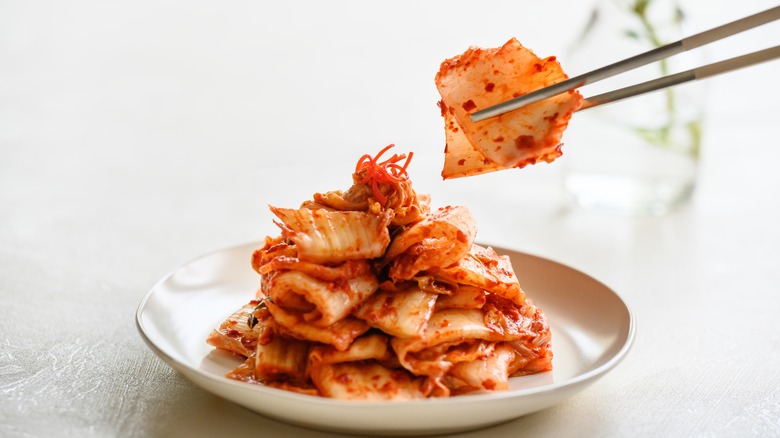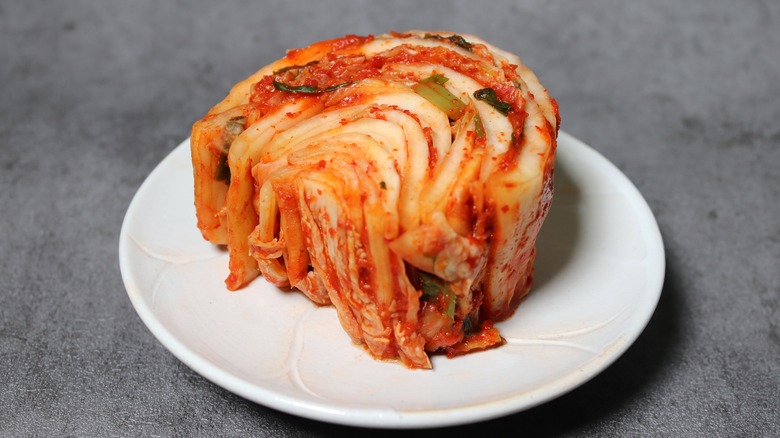If The Tang Of Kimchi Is Too Much, You Should Try This Sweeter Version
Few fermented vegetable dishes have achieved the iconic status of kimchi. All the attention surrounding this Korean specialty is easy to understand. Kimchi is both scrumptious and endlessly malleable: You can enjoy it raw, craft a stew, use it as salad topper, sauté it, or even put it on a sandwich. Yet especially in the U.S., consumers are often only accustomed to the tangy, spicy, and umami-laden baechu type of kimchi.
Nevertheless, there are more underrated kimchi varieties you need to try, with each style catering to a certain palate. So say the acidity of kimchi is too much for you — perhaps you're turned off from pickled vegetables generally. Well, sample a type called baechu geotjori. This style is prepared for fresh consumption, with no fermentation process. Almost like a well-seasoned salad, it involves many of the same components as a classic napa cabbage kimchi.
The green is cut up and seasoned with allium aromatics, spicy gochugaru, and sweeteners like sugar or syrup. However, the lack of fermentation develops neither acidity nor sweetness in the kimchi. Instead, the ingredients establish the palate; hence why the added sugar compensates. Depending on the rendition, the flavor profile can lean spicy or salty, and often delectably sweet.
Unfermented baechu geotjori packs no acidic flavor
Fermented kimchi involves patience: A month is a common preparation duration. So, not only are the resultant flavors hard to predict, but they keep changing, as fermentation never stops. In fact, with the popular baechu kimchi, the vegetable only turns more acidic over time. As a result, if you're averse but not opposed to tangy flavors, you could try a fresher batch of fermented cabbage. Conversely, if you're a fan of a dose of funk, then leave the container open to improve store-bought kimchi.
Since fermentation contributes acidic flavors, the baechu geotjori type steers clear of the territory entirely. Instead, the dish showcases the crisp and fresh flavors of cabbage. At the start, the cabbage is still salted, but the aim is to season and soften rather than preserve. Most recipes do involve a bold dash of heat, since this kimchi rendition is made to pungently flavor soups or rice. And to contrast, there's also typically a sweet component, which can be as simple as table sugar or more complex plum syrup. Such a flavor mix highlights the cabbage in a new light, showcasing the versatility of the kimchi template.

